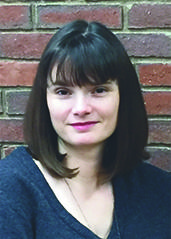Topics
- active learning (18)
- research assignments (6)
- libraries (1)
- literature-based learning (2)
- multimedia (5)
- museums (6)
- object learning (7)
- online learning (5)
- peer instruction (10)
- storytelling (2)
- learning management system (2)
- syllabus design (3)
- teaching empathy (3)
- teaching fellows (1)
- lecture (3)
- learning goals (8)
- assessment (6)
- data (3)
- backward design (3)
- blended approaches (12)
- case-based learning (8)
- classroom contracts (7)
- classrooms and space (3)
- collaborative learning (27)
- community events (1)
- course transformation (7)
- devices (3)
- learning by making (5)
- discussion (24)
- engaged scholarship (4)
- experiential learning (16)
- feedback (18)
- group work (8)
- guest speakers (7)
- interdisciplinary (6)
- leadership (3)
Send feedback
Subscribe
Copyright © 2024 The President and Fellows of Harvard College | Privacy | Accessibility | Digital Accessibility | Report Copyright Infringement

 Jal David Mehta, Associate Professor of Education, directs students to use
Jal David Mehta, Associate Professor of Education, directs students to use  Emily Dolan, Gardner Cowles Associate Professor of the Humanities, co-teaches the graduate seminar
Emily Dolan, Gardner Cowles Associate Professor of the Humanities, co-teaches the graduate seminar  Michael I. Norton, Harold M. Brierley Professor of Business Administration, uses experiential exercises to help students build strong foundations for collaborative work. In the
Michael I. Norton, Harold M. Brierley Professor of Business Administration, uses experiential exercises to help students build strong foundations for collaborative work. In the  Mark Mulligan, Associate Professor in Practice of Architecture, requires students in
Mark Mulligan, Associate Professor in Practice of Architecture, requires students in